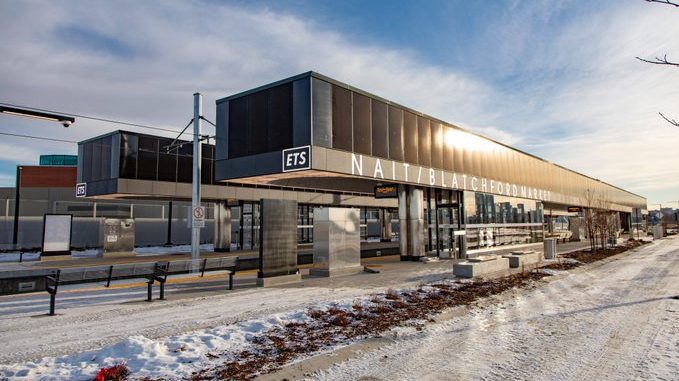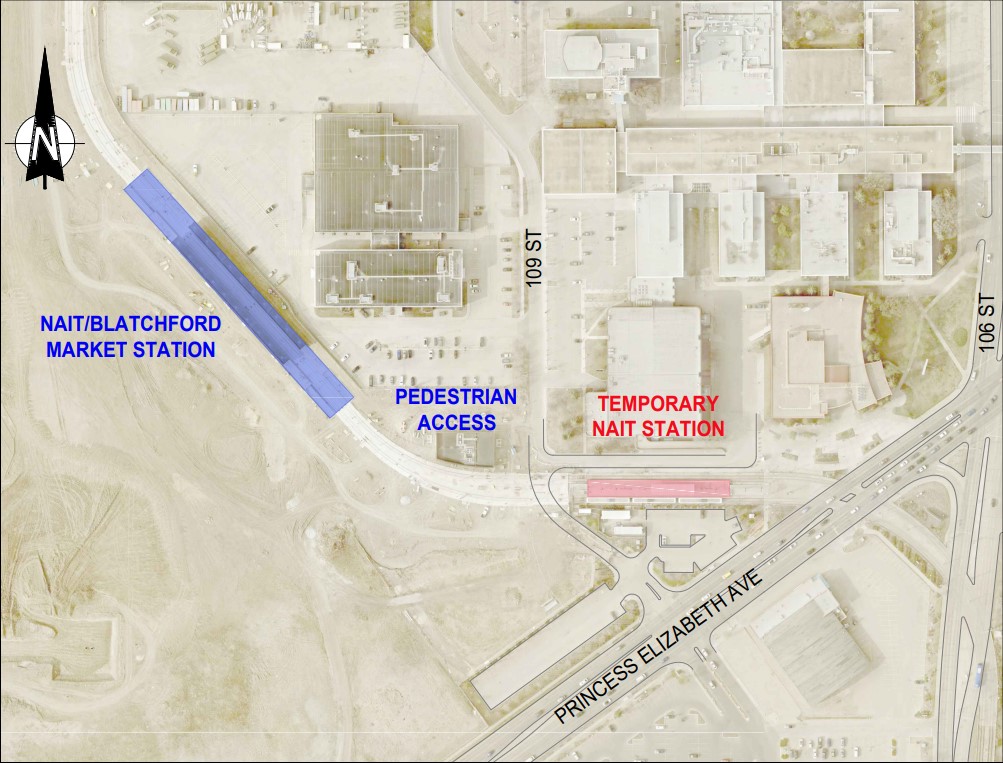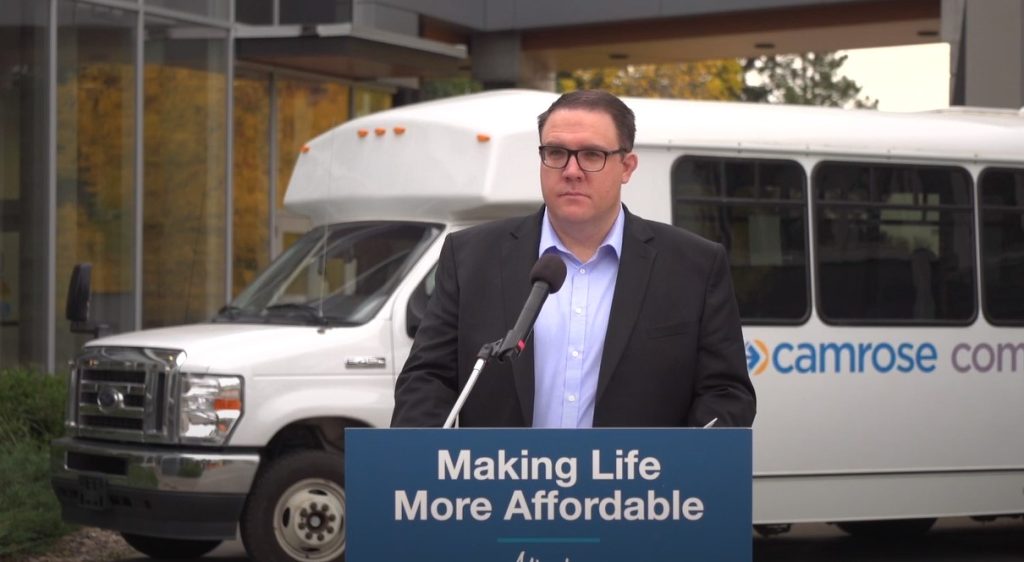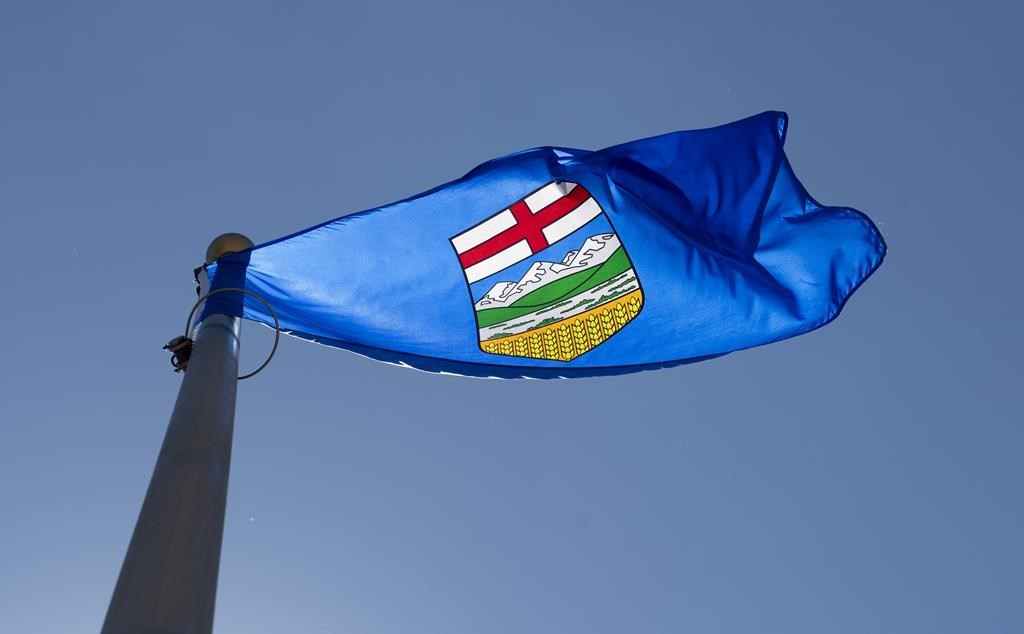New NAIT/Blatchford Market LRT station to open ahead of schedule

Posted January 16, 2024 5:41 pm.
It’s good news for Edmonton transit riders, especially for students at NAIT, as the City of Edmonton has announced that the new NAIT/Blatchford Market LRT station will be opening on January 20.
The City announced Tuesday that the opening of the station completes Phase 1 of the Metro Line Northwest LRT extension project over a year ahead of schedule.
The station was expected to be completed in 2025, but was completed in December, which is a positive for the City and Edmonton Transit Services following all the delays with the Valley Line project.
“Completing Phase 1 of the Metro Line Northwest LRT extension ahead of schedule is a significant infrastructure milestone to serve our growing needs,” said Mayor Amarjeet Sohi. “This extension further strengthens our LRT network and provides the north side of Edmonton with greater access to transit service.”
The new station will connect the downtown core for future Edmontonians living in Blatchford, and those currently living in Westwood or attending NAIT.
The new station is a major upgrade from the temporary station currently at NAIT, as it will feature a longer platform to accommodate for ridership growth.
“Alberta’s government remains committed to supporting transit in this province. We are pleased to see this significant step forward in the Metro Line Northwest LRT with the opening of the NAIT/Blatchford Market LRT station ahead of schedule and on budget,” said Devin Dreeshen, Minister of Transportation and Economic Corridors.
The station is located 300 metres west of the current temporary station.

The City says once the new station opens, service frequency and bus services will remain the same.
In addition, the new station features fewer barriers and focuses on improved access to the LRT. It is also equipped with solar panels which will supply most of the station’s electricity.
Lastly, the City noted the first phase cost $291 million. Of that, $103 million was contributed from the federal government, $107 million from the province, and $58 from the City.








